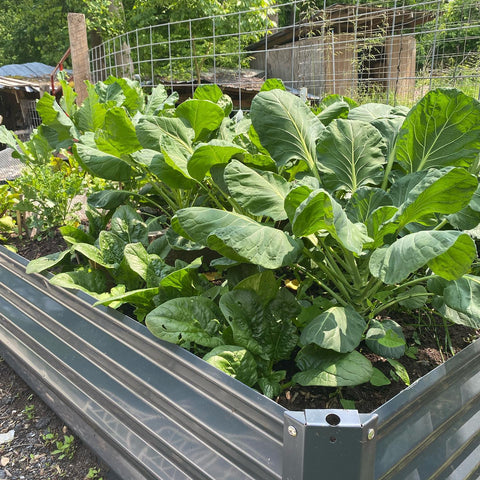As spring rapidly approaches, trees begin to sprout and long-dormant grasses begin to shake out of hibernation. From gardening expert to novice, this is a time to prepare and plant flowers, vegetables or other plants. We asked a group of professional gardeners what advice they wish someone had told them when green growers were just starting out that they would have shared with them. Read on to learn how to have a beautiful garden this season. The following content also has some reference value for raised garden beds.
Plan ahead
The first thing to do with any project, gardening or otherwise, is to make a plan. To be more targeted, make a smart plan that thinks less about the changing seasons and your favorite plants and more about what grows best where you live. Not every flower or herb should be in the ground in spring, not even in your area.
Many beginners will think that all plants are best planted in early spring, but many bulbs and ground cover plants will benefit from late spring or even fall planting. Fortunately, this is easy to determine, as seed packets will usually have this information.
The packages also show which cold-resistant zones are best suited for each plant to achieve the most success. A hardiness zone is a geographic area with a fixed annual average temperature, and looking at a map of these zones can easily tell you what is likely to grow well in your garden and what won't.

Soil preparation
Once you have the type of vegetable or herb you're going to grow, it's time to prepare the soil. Depending on where you live, the soil may not be ideal. Maybe it contains a lot of clay, or lacks the nutrients needed to promote growth. But according to Dave Lavrinetz, manager of Barton Springs Nursery in Austin, Texas, you can easily shape the soil.
Horticultural success begins with good soil, especially remineralization. Remineralization is the addition of rock powder, or rock dust, to soil when it lacks the key elements needed for optimal growth. Paying close attention to soil health will go a long way toward achieving the best gardening results.
Fertilizer is very important for the health and nutrition of all plants, it can take your garden to the next level, and using organic fertilizers that do not harm the soil biome can create long-term benefits and long-term effects.
Proper drainage is also key. If you water your garden, plants can only absorb so much water. The rest of the water needs to go somewhere. Standing water not only increases the chances of root rot, but it also deprives plants of the oxygen they need to grow.
Plant artful
Creating a garden is more than just digging a hole and spreading some seeds. In fact, if you skip this step, you may have a more successful experience depending on the plant and yield you want.
It can be very beneficial to grow plants indoors and then transplant them to an outdoor garden. Planting vegetables or herbs that are grown indoors will make your plants better able to resist outdoor conditions and speed up their growth. In some cases, you may still want to plant directly from seed, but knowing which method is best is crucial for novice gardeners.
The general rule of thumb is that you want to directly seed any plants you want a lot of and transplant those you need very little. So if you're sowing a row of lettuce, you can plant it directly, while larger plants like tomatoes, peppers, and pumpkins should be transplanted.
No matter what method you take to get your new plant to grow, another professional tip is to pay attention to location. It may be tempting to plant as many seeds as possible or transplant them into your growing space, but resist the urge. When you plant too many plants together, it causes their roots to compete with each other for nutrients in the soil. Overcrowding can also cause taller plants to block much-needed sunlight from other plants. It's important to research how much space you need between the plants you want to grow, and which plants should or shouldn't be near each other.

Learn proper care
Once you have put the seeds or transplanted them into the ground, the most critical stage of gardening begins. How often and when you water can make a big difference to your results. If you live in a sunny, warm climate, it makes sense to give your garden a drink at night when the sun isn't shining on it. In fact, experts warn against it, and for good reason.
The best time of day to water is in the morning. Watering at night can cause plants to retain water, which can lead to root rot.
Water plants in the morning so that the excess water evaporates, and it is best to water plants at the roots as this reduces the chance of mold and leaf spot.
A successful garden requires many things, both in the spring and during other growing seasons. Learning the lessons of the experts will give you the best chance to become your own green thumb.









